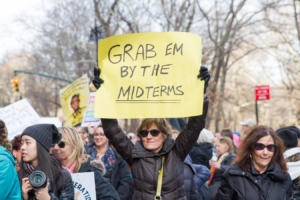4 Things to Look For In Fourth Quarter FEC Reports
With the FEC year-end reports for all federally registered political organizations due this Sunday, pundits and politicos will quickly begin to prognosticate over the true meaning behind the numbers. When it comes to Presidential campaigns, the top line fundraising totals always get the most attention but, in reality, there is little correlation between raising the most money and actually winning delegates.
So if the top line numbers alone aren’t good indicators of a campaign’s likelihood of success, what is? Here are four things you probably won’t see in headlines, but they’re what experts will be looking at to see which candidates are truly going to rise to the top of the field.
1. Campaign Spending
Subscribe to Receive Insights
"*" indicates required fields
How a campaign is spending their money may very well be the best measure of their operational efficiency. Every dollar raised should be optimally spent to generate votes, volunteers or more dollars, and the stated purpose of campaign expenditures can make it clear whether a campaign is following that tenet. Large expenditures on ambiguous outside consultants, ritzy office space, high-cost low-return fundraising and anything else that won’t help get that candidate’s voters to the polls should set off alarm bells.
2. Airtime Reserved — And Paid For?
This point and the previous one go hand-in-hand, since television airtime is one of the most expensive items on any campaign’s grocery list. Since most campaigns reserve airtime far in advance, it deserves a special examination. See if the campaign has paid for the airtime that its claimed to have reserved. If they have, it shows a level of financial security and confidence about the state of play, but if they haven’t, there’s still at least one very large outstanding bill somewhere in HQ that may not ever get paid.
3. Debt
Speaking of unpaid bills, how much debt a campaign carries will help show how well they are budgeting and spending their money. Did the campaign manager shove a bunch of invoices in a drawer until the day after the quarter closed? Looking at the debt will help you see past those flashy Q4 totals every campaign will be spinning and understand how much real cash-on-hand they have. It can even become a quick political attack — liberal candidates with large campaign debts can be attacked for lacking fiscal restraint while conservative campaigns could be accused of not living up to the principles they are espousing.
4. Burn Rate
Burn rate means how quickly a campaign is spending the funds it is raising (usually talked about as a percentage of money spent vs. how much they’ve raised). Take a minute to look at this figure to see if a campaign is in free fall, spending money faster than it can raise. One way or another, this primary season is likely to be as long and drawn out as any we’ve seen, so having enough money to survive will be fundamental to any successful strategy.
When the reports are released Sunday night, there will be a lot of numbers and figures to look at but not all of them will provide as much insight as they may seem. If you take a look at these items first, you’ll be one step ahead of the boilerplate coverage, and you’ll know as much as anyone about where the campaigns actually stand.



